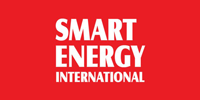
A submission from the Australian Academy of Technology and Engineering to the federal government’s proposed technology roadmap has called for “deep and ongoing” investment in renewable energy generation in response to the Coalition’s apparent skew towards gas, carbon capture and storage, and coal.
The submission follows last month’s publication of a discussion paper by federal energy minister Angus Taylor, which cites 140 different technologies ranging across the electricity sector, to buildings, transport, manufacturing and agriculture.
The proposed roadmap, while careful not to “pick winners,” raised serious concerns that the Morrison government was seeking to delay, nobble or handicap wind, solar and storage, while propping up gas, refusing to rule out coal, and even canvassing small modular nuclear reactors.
A submission from the ATSE, however, says Australia can become a world leader in renewable energy, and recommends half-a-dozen crucial actions to achieve this, including by scaling up infrastructure to support greater use of solar and wind power, a rapid transition to electric heating and transport, and developing a hydrogen energy economy.
“Renewable energy is getting cheaper, and the technology exists today to scale up production and introduce mechanisms to ensure the reliability of supply, move towards meeting domestic and industrial energy needs, and transition to electric and hydrogen fuelled transport systems,” the chair of the ATSE’s Energy Forum, Dr John Söderbaum, said in the submission.
“The key next step is to continue to develop and adopt storage solutions that increase our ability to rely on renewable energy and allow generation using older, emissions-heavy fossil fuel technologies to retire.
“We recommend deep and ongoing government and private sector investment to support further research and development, production, storage and network integration of all low-cost and low-emissions energy sources, including hydrogen.”
read more












